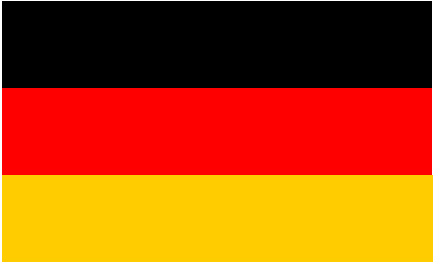

Germany After World War II
Germany, Like the British and the French suffered during the war. The German people for a while were dazed from the impact of the war, which to say the least was worse than most countries. The bombings in many of the cities were considered worse than the holocaust of Hiroshima and Nagasaki (Manvell, 1971). Those who came to live in the four zones controlled by the allied government were shocked as they moved along the paths of the bombed out cities. Germany was no longer a country, they had no constitution, no trust worthy institutions, and no system of law.
In 1948 the German economy began to lift with currency reforms in the western zones. "The Germans needed a cultural rebirth. The Germans needed a new cultural movement, a new press and a new educational system" (Manvell, 1971). Part of the immediate post war rehabilitation of Germany was to find expression in film. This proved to be a difficult task for Germany, considering the cinemas piles of ruble, sustained during the bombings. Before the war in Munich, there were eighty cinemas; in the after math there were less than ten cinemas in use. Berlin was an exception, where authorities quickly began to work together in promotion of entertainment in the cinema. In January of 1946 there were no less than 170 cinemas operating (Manvell, 1971).
Even with the hard ships, the Germans had put together a small come back. In 1947 the Germans completed seven films, 1948 saw the Germans make twenty-six films, by the middle of 1948 the Germans were in the process of producing seventy films. (Manvell, 1971)
For the Germans the period of social comment, self- examination, and self-pity was all but over. The rebuilding German film industry was not set for the box office. The talent, which had shown their strength during the three years of social adjustment were soon to be stopped, unless they turned in the direction of escape (Manvell, 1971)
The Decline of German Films
The currency reform of 1949, and the beginning of the West German economic reform of the 1950's was the first hit on German films. It was to be expected that the films dealing with the hard past would no longer attract audiences, as these days were occupied with hard work putting the country to rights and rebuilding industry (Manvell, 1971). The urge for self- examination was gone.
The industry was soon to become overstocked with box office films. The United States imported 211 films into the federal republic (Manvell, 1971). The tightening hand of authority assured that political and social austerity was the key characteristic of East German production. Few East German films made it to the screens in the west during the 50's. The period saw the end of interchange of talent between east and west Germany, which had not happened a lot in the 1940's.
The conditions in the West Germany were not good either. In the 1950's West Germany favored profit motive only (Manvell, 1971). After the currency reform, producers had to look directly to commercial distributors for financial backing, as there was a shortage of private capital. The industry centered under the Nazi's was fragmented under allied control, with 150 small companies with licenses to produce films. There was no shortage of actual film, West Germany was the fifth largest producer of films in the world, with 108 films in 1954, but the financial quality was just not there (Manvell, 1971).